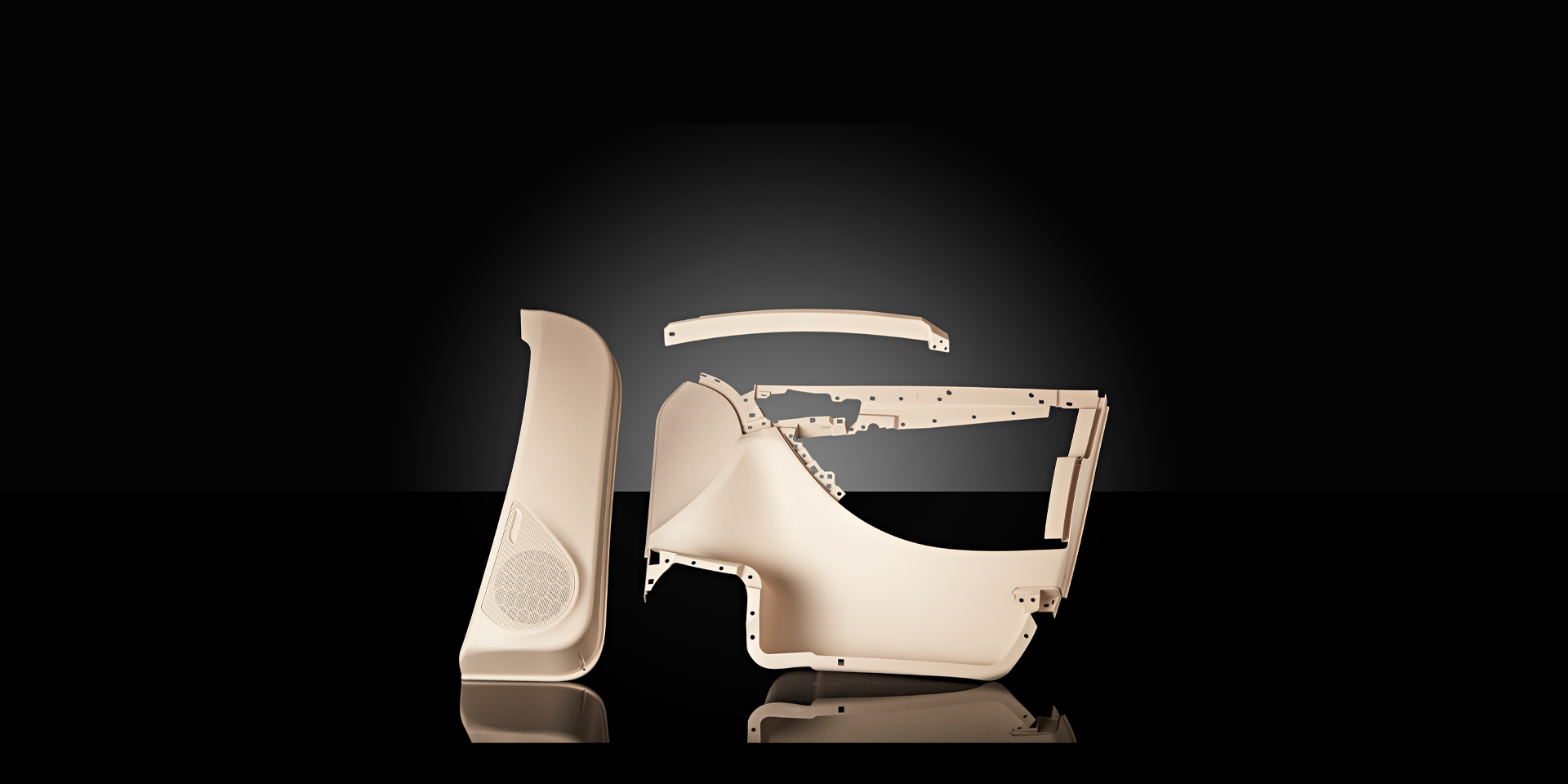FLEXflow Evo allows to fill all cavities simultaneously without the risk of overfilling, underfilling or flash formation.
At Fakuma 2021, Oerlikon HRSflow used the example of a family mould for the one-shot production of 3 very different-sized, high-quality door module parts for automotive interiors to demonstrate how FLEXflow Evo technology can enable cost savings without compromising moulded part quality.
Family molds for injection moulding several plastic parts in one shot reduce production costs compared to separate production of the individual components. One challenge is their often very different volumes and geometries. When using conventional sequential injection moulding systems, small cavities are often overfilled, while large ones are not completely filled.
In contrast, FLEXflow Evo servo-driven valve gate technology enables precise control of the mould filling process because it allows the stroke and force for each individual needle to be precisely controlled during the opening and closing phases. This makes it possible to overcome previously existing limitations and fill all cavities simultaneously without the risk of overfilling, underfilling or flash formation, even with large weight differences between individual parts. The combination of family mold and FLEXflow Evo technology reduces the production costs of molded parts by up to 30 %, reduces the number of molds required and thus their set-up costs, and increases plant utilisation.
Oerlikon HRSflow demonstrated this at Fakuma using the example of a 3-cavity family mold for three modules of a car door inner lining with weights of 53, 352 and 613 g and wall thicknesses between 2.3 and 3 mm. FLEXflow Evo provides individual control of the servo-electric drives for all eight hot runner valve gates used in this application. This allows the force and stroke of each valve gate to be sensitively regulated to optimise the appropriate pressures, flow rates and volumes of melt in all three cavities. The result is low-distortion, defect-free parts with finely grained surfaces.


